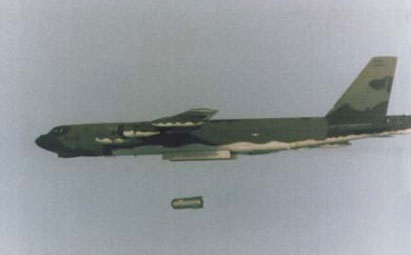B52-411.jpg [1]


When U.S. President Barack Obama took to the podium during a rare visit to the Pentagon [2] early last month, he announced a new strategy for the country's military posture abroad. The United States would shift from being able to fight two major wars simultaneously to increasing its focus on Asia. But the president also explained that reductions in the U.S. nuclear arsenal would be key to future defense: "We will continue to get rid of outdated Cold War-era systems," he said, "so that we can invest in the capabilities we need for the future."
Policy, meet budget. After having been separated for a decade, as the Pentagon operated essentially free from fiscal considerations, the two have been reunited in Washington's new age of austerity. On nuclear weapons, that fact should work in Obama's favor. In his first major foreign policy speech, delivered in Prague in April 2009, he vowed to "put an end to Cold War thinking" and "reduce the role of nuclear weapons in our national security strategy and urge others to do the same." Obama negotiated the New START agreement with Russia, which both countries signed a year later. It lowered the ceiling for deployed U.S. and Russian strategic warheads by 30 percent and restored reciprocal inspections, vital to verifying the reductions. Obama also oversaw a Nuclear Posture Review, which formalized his Prague goals as policy.
But in the past year, Republican opponents and a resistant nuclear bureaucracy have stymied further progress. Contracts raced ahead of policy -- Congress pushed through budgets to develop a new generation of nuclear arms before the president and the Pentagon could agree on the specifics of the new course. Unless this is reversed, in the coming decade Washington may actually spend more on the country's nuclear weapons programs than it has in the past [3]. If the president wants to reduce the country's costly nuclear weapons burden he now has a chance. Last summer, as part of the April 2010 Nuclear Posture Review, the Pentagon started compiling a new, highly classified report with options for the structure and size of the nuclear force -- how it is composed, who and what it targets, and whether it continues to be postured to launch a devastating first strike on multiple states.
Now, the National Security Council staff at the White House is working with the Defense Department and other agencies to further shape policy options for the president's consideration. The package will likely be ready for him this month. Whatever Obama decides will then be codified in a presidential policy directive that will form the basis of the country's new strategic nuclear war plan. Since the end of the Cold War, every U.S. president has done this once. This is Obama's turn.
This article was originally posted on ForeignAffairs.com. Click here [4] to read the full article.
Links
[1] https://ploughshares.org/file/2711
[2] http://bit.ly/yFvfFp
[3] http://bit.ly/wtOpdL
[4] http://www.foreignaffairs.com/articles/137075/joseph-cirincione/obamas-turn-on-nuclear-weapons?page=show